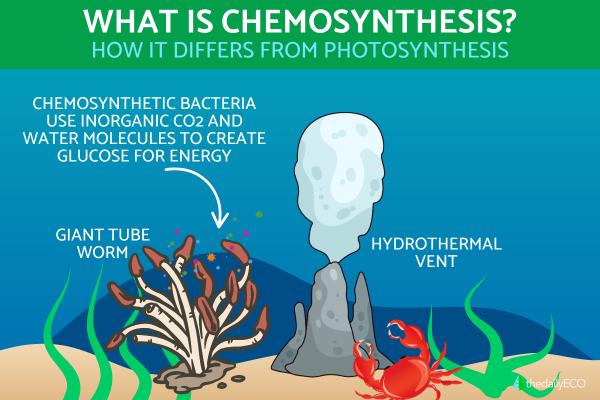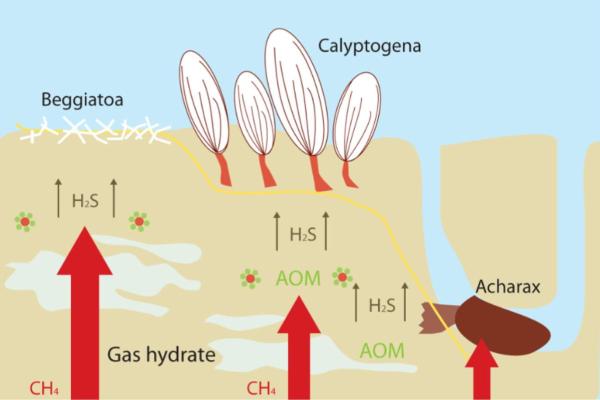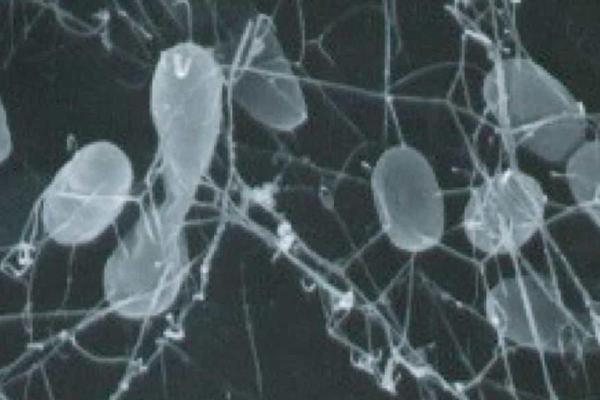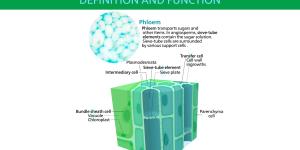What Is Chemosynthesis and How Is It Different From Photosynthesis?


Chemosynthesis is a metabolic process in which inorganic substances are oxidized into organic matter using inorganic compounds. This process is mainly used for the organisms which carry it out or those which directly depend on them. Although it involves oxidization, it does not produce oxygen as a byproduct. Some organisms that use this process are sulfur-forming and ferrous bacteria. In biology, we often understand chemosynthesis in its relation to photosynthesis which uses sunlight for energy conversion.
The organisms which use chemosynthesis are types of autotrophs, producer organisms which create their own food. At thedailyECO, we learn more about how this process works and its effects as we ask what is chemosynthesis and how is it different from photosynthesis?
What is chemosynthesis?
Chemosynthesis is an anabolic biological process which creates molecules from simple chemical compounds to form more complex ones. Anabolism is the process in organisms of creating more complex molecules from simple ones. Chemosynthesis does this by synthesizing chemical compounds.
In this chemosynthetic process, carbon-rich molecules are used along with the oxidation of inorganic compounds to produce organic matter. It is a metabolic process, meaning it is necessary for the organism's survival, both for creating molecules and for obtaining energy. Simply put, chemosynthesis inorganic molecules are transformed into organic molecules during chemosynthesis. They are then integrated into the metabolism.
Discover more about the different types of metabolism in organisms with our article sharing the differences between anabolism and catabolism.

Phases of chemosynthesis
Chemosynthesis takes place in two phases, which we detail below.
Phase I: Energy production
This is the first step of chemosynthesis. It is during this phase that the generation of energy molecule ATP takes place.
Inorganic compounds are those lacking carbon and are present in the organism's environment. To generate ATP, these inorganic molecules are oxidized. Examples of these molecules include sulfur, methane, ferrous iron, ammonia, hydrogen and nitrites. The oxidation process involves these molecules losing electrons that enter the electron transport chain where ATP is then generated. In this step, the inorganic compound will be transformed.
Phase II: CO2 fixation
This is the second part of chemosynthesis. The energy obtained from phase I is used to transform inorganic substances. It is at this point that the sources of carbon (CO2 or methane) are attached to organic matter through the Calvin cycle. The result will be the transformation into carbohydrates and amino acids, nutrients which chemosynthetic organisms need to survive.
We explain the different types of nutrition for living organisms in our related guide.
Examples of chemosynthetic organisms
Generally speaking, all chemosynthetic organisms are either types of bacteria or archaea. Many of these organisms live in extreme conditions. Below are some examples:
Hydrogen-forming bacteria
These are those that oxidize hydrogen compounds. They use molecular hydrogen (H₂) as an energy source, which reacts with oxygen to form water. This reaction releases energy, which is then used for the synthesis of essential organic compounds. They are found in environments with low oxygen concentrations and the presence of gases, such as underground springs or deep marine sediments.
Learn about one of the deepest places on Earth with our article on animals in the Mariana Trench.
Sulfur bacteria
These are organisms that oxidize sulfur compounds, which are often formed during the decomposition of organic matter. Along with CO2, these compounds form carbohydrates and sulfur, the former being what bacteria use to carry out their basic functions. They are frequently found in discharge waters with a characteristic sulfur aroma, as well as in hydrothermal vents on the seabed or among accumulated mud.
An example is the symbiotic bacteria that live in the giant tube worm (Riftia pachyptila), annelids which live in oceanic hydrothermal vents. Light does not reach them and the temperature is extremely high. These bacteria use hydrogen sulfide from the hydrothermal vents as an energy source. In addition to the carbohydrates and amino acids they need to survive, they produce sulfur as a byproduct of chemosynthesis. These bacteria carry out the process of obtaining organic matter so that the giant tube worm can use it to survive.
Nitrifying bacteria
These are bacteria that oxidize ammonia first to nitrites and then to nitrates. These are extremely important for plant growth. For example, these nitrogen compounds help legumes produce proteins. Some examples of nitrifying bacteria species are Nitrobacter spp. and Nitrosomonas spp.
Ferrous bacteria
They oxidize ferrous oxide into ferric oxide. One example is the bacteria Leptospirillum ferrooxidans. They form ferric oxide a s a byproduct, also known as rust. They contribute to the deterioration of pipes and can be identified by a rotten smell.
Discover more about autotrophs like chemosynthetic bacteria with our article explaining what are producer organisms in biology?

How is chemosynthesis different from photosynthesis?
Both photosynthesis and chemosynthesis are anabolic processes in which an organism produces its own energy, but the difference between the two is that photosynthesis uses light energy to generate energy, while chemosynthesis uses chemical energy for this purpose.
With this key difference in mind, we can look at the differences between chemosynthesis and photosynthesis:
- Organisms involved: photosynthesis is carried out by complex organisms such as plants and algae, as well as phototrophic bacteria such as cyanobacteria. Chemosynthesis is only carried out by certain species of bacteria and archaea.
- Energy source: chemical energy fuels chemosynthesis and light energy enables photosynthesis.
- Environments: since photosynthesis requires light, it can only occur in environments where light can reach it. Chemosynthesis can occur in environments absent from light such as the deep ocean.
- Electrons: electrons are mainly from water in photosynthesis, but various inorganic molecules can provide molecules in chemosynthesis.
While both processes produce glucose, only photosynthesis creates oxygen as a byproduct. Chemosynthesis creates non-oxygen byproducts such as sulfur.
Discover more with our article explaining in more detail how photosynthesis works.
Why is chemosynthesis so important?
Chemosynthesis was the first type of metabolism to exist on Earth. If it weren't for this process, life would not exist.
It is important at the ecosystem level because it uses the reduced substances that heterotrophic living beings emit as waste to carry out their metabolism. This means they are recycling inorganic compounds and closing the cycle that sustains other living beings. For example, nitrifying bacteria convert ammonia from animal carcasses into nitrates useful for plants. They also help maintain the nitrogen and hydrogen cycles, both essential for life.
On the other hand, chemosynthetic organisms can improve environmental conditions. For example, some bacteria nitrify the soil, making this element bioavailable to plants.
While photosynthesis is important for its ability to produce oxygen, chemosynthesis is another important natural process which allows for ecosystems to survive. Without it, the biocenosis would not be in balance and the repercussions could be devastating. It is a foundational process for various types of ecosystem, especially marine ecosystems.
If you want to read similar articles to What Is Chemosynthesis and How Is It Different From Photosynthesis?, we recommend you visit our Biology category.
- Lauría Baca, L. (2015). Biology 1. Spain: Larousse - Grupo Editorial Patria.
- Gama Fuertes, M. dl Á. (2007). Biology 1 - Sep "A Constructivist Approach". Mexico: Pearson Education.







